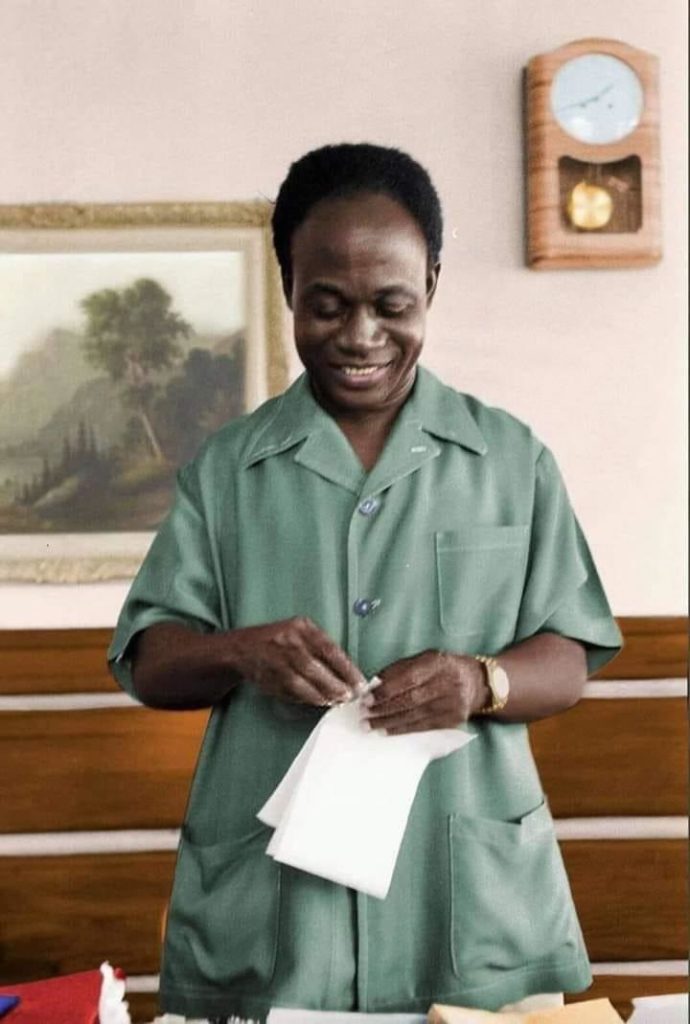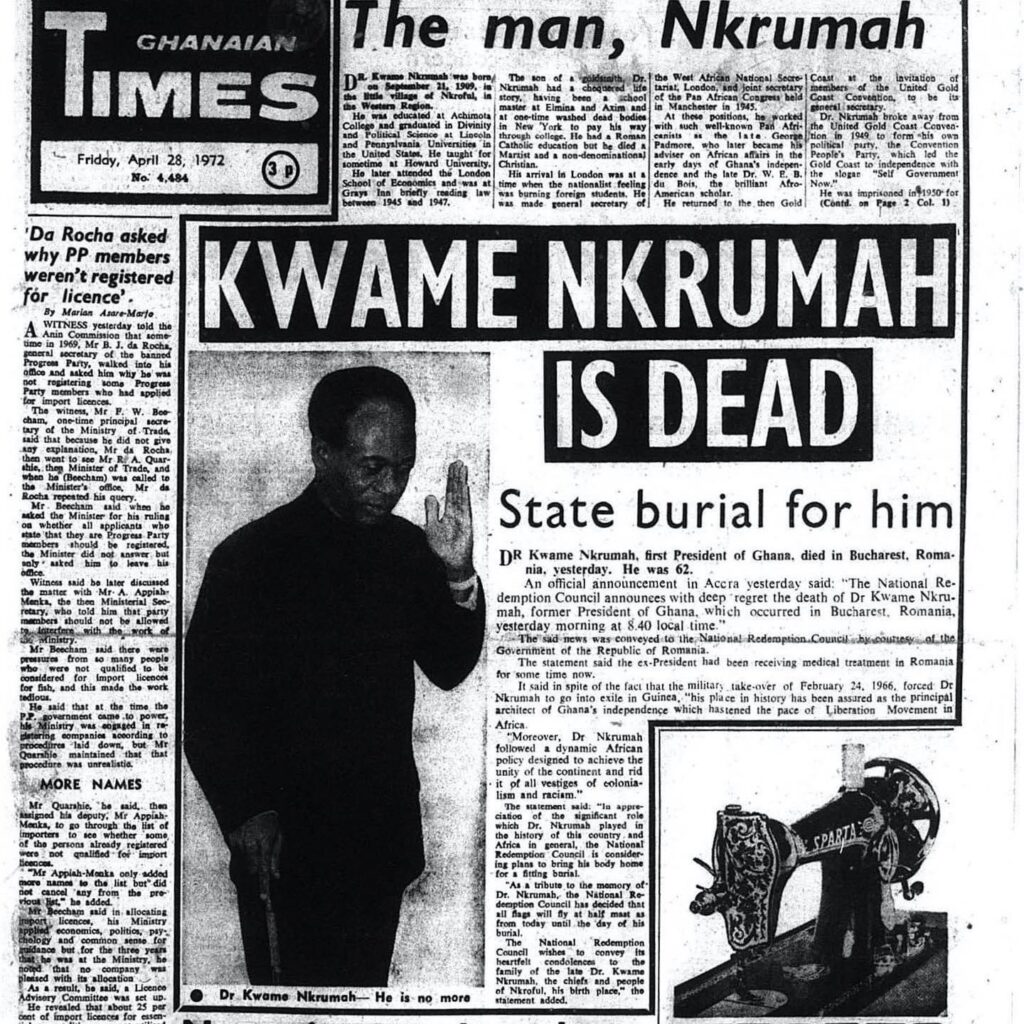
Exactly 48 years ago, on April 27, 1972, Kwame Nkrumah, the deposed President of Ghana and a great Pan-Africanist died in Bucharest, Romania after six years in exile in Guinea far away from his birthplace of Nkroful at the age of 62.
Kwame Nkrumah played a pivotal role in the formation of the African Union (A.U) previously called the Organization of African Unity (O.A.U) and led his country to independence in 1957.
President Kwame Nkrumah was unconstitutionally ousted from office through a military coup. The Coup was launched by the National Liberation council (NLC) with the code name “Operation Cold Chop,” on February 24, 1966 whiles he was in Peking (today’s Beijing) en route to the Vietnamese capital, Hanoi, with plans to end the American war in Vietnam.
Kwame Nkrumah arrived in Conakry, Guinea after being invited by Sekou Toure just after the Military Coup that unconstitutionally ousted his Government from Power.
In distant Bucharest (Romania), April 27, 1972, far from his green and lovely native land and from his own people, Kwame Nkrumah died of cancer.

His death, of cancer, was announced by President Sekou Toure of Guinea, one of the militant nationalist’s closest friends. Mr. Nkrumah had been living in Guinea since his overthrow in a military coup in 1966.
Several African Heads of State and the representatives of 25 other countries paid their last tributes to Ghana’s former President, Dr. Kwame Nkrumah, on Saturday, May 13, 1972 after a funeral ceremony in Conakry, the Guinean capital.
Also represented at the funeral ceremony was Ghana’s new ruling military body, the National Redemption Council. But in Accra, there was no word of when Dr. Nkrumah’s body would be flown back for burial — and there were some misgivings that it would not be returned by the Guineans.
The return of his body to Ghana followed lengthy negotiations between Ghana’s military rulers and the government of Guinea. Dr. Kwame Nkrumah, was buried at his home town of Nkroful, 240 on Sunday 9 July, 1972. While the tomb still remains in Nkroful, his remains were transferred to a large national memorial tomb and park in Accra, Ghana.
Today, the place is known as Kwame Nkrumah’s Mausoleum and has become a tourist destination for Ghanaians and those in the diaspora.

The idea of erecting a monument in honour of Nkrumah dates back to 1972, when the African Students Union sent a memorandum asking the Government of Guinea, then under President Sekou Toure, to send the mortal remains of the Ghanaian leader to Ghana only if the military leaders at that time denounced coup d’état and re-erected the statue of Nkrumah which was destroyed during the 1966 coup.
Although the remains were later returned to Nkroful, his birthplace, it was not until 1992, that the image of Nkrumah was restored on the Old Polo Grounds during which the erstwhile Provisional National Defence Council (PNDC), decided to build the Kwame Nkrumah Mausoleum.
Source: ghanaianmuseum.com



